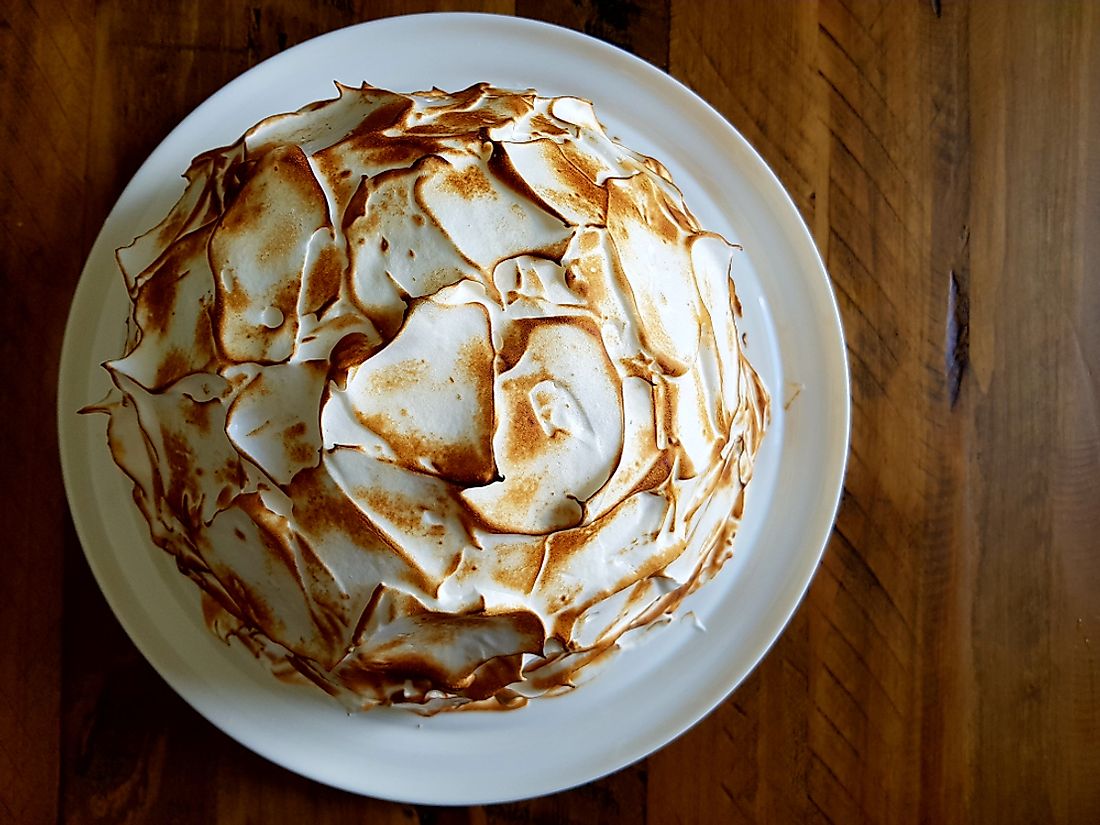Is Baked Alaska Really From Alaska?

Baked Alaska is a dessert with layers of sponge covered with ice cream and encased with meringue. It is usually kept in a freezer and baked in a hot oven until it turns brown. The dessert's origin is claimed by Charles Ranhofer, a French Chef who worked at Delmonico's Restaurant in New York. The Paris trained chef was a brilliant marketer and a talented cook who invented many dishes and popularized many more.
Origin of the Name Baked Alaska
Ranhofer used clever names for new recipes or renamed available ones after significant events and famous people. Dishes such as La Cleveland and Sarah Potatoes got named after the US president, Grover Cleveland and popular actress Sarah Bernhardt. Baked Alaska illustrated his culinary marketing prowess. The dessert was named after the Alaska purchase from the Russian Empire in 1867. The purchase at the cost of $7 million was a highly debated topic throughout the country. Many political observers were critical of the acquisition of the northern frozen landmass. Ranhofer exploited the controversy surrounding the topic and created the "Baked Alaska," a dessert that promised mystery, ice cream equipoised with heat. The dessert complimented the extravagant and luxurious dining style at Delmonico's restaurant.
Earlier Versions of the Dessert
Desserts similar to Baked Alaska first appeared on dining tables in the early 19th century. The serving of ice cream to guests at the White House during State banquets was not uncommon during Thomas Jefferson's presidency. In 1802, guests at the dinner described a dessert that was made up of delicious ice cream and a crust that was wholly dried, and crumbled into flakes.Earlier versions of the dessert are claimed by many people, among them Benjamin Rumford. Rumford, an American physicist, is credited for the invention of cooking devices such as the coffee percolator, and the fire grate. The physicist was particularly intrigued by the insulating properties exhibited by egg whites. In 1804, during one of his experiments, the physicist created the peculiar dessert which he later named as "omelette surprise."
Introduction of Versions of the Dessert in France
According to records from Baron Leon, a food writer from France, the dessert was introduced to the country in 1866 by Balzac who was a French chef. In 1895 a replica of the dish was created in Monte Carlo by another French chef called Jean Giroix. Giroix dubbed it the "omelette la norvienne," which translates to "Norwegian omelet."
Hack Behind the Ice Cream That Does Not Melt
Desserts such as Baked Alaska utilize the interesting properties of the meringue, which consists of primarily egg whites and sugar. The meringue's insulating properties prevent the heat from getting to the ice cream, allowing browning without a messy melt. The dish is currently served in several high-end restaurants in various countries. In the Hong Kong version of the dessert, syrup, and whiskey is poured on top before it is ignited. The dessert is expected to grow in popularity as retro trends make a comeback.











